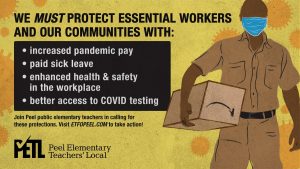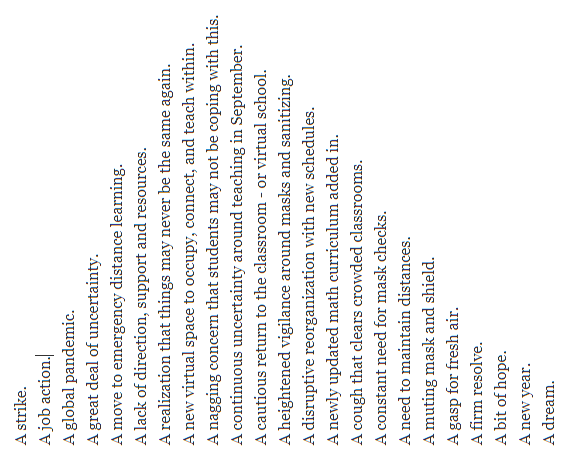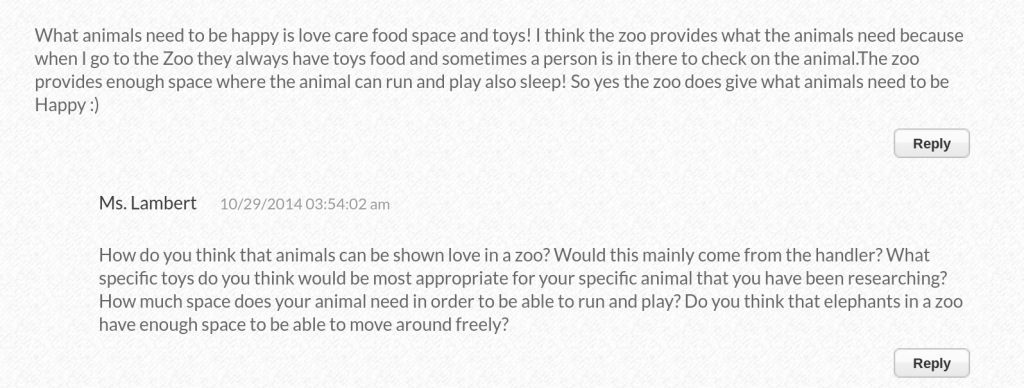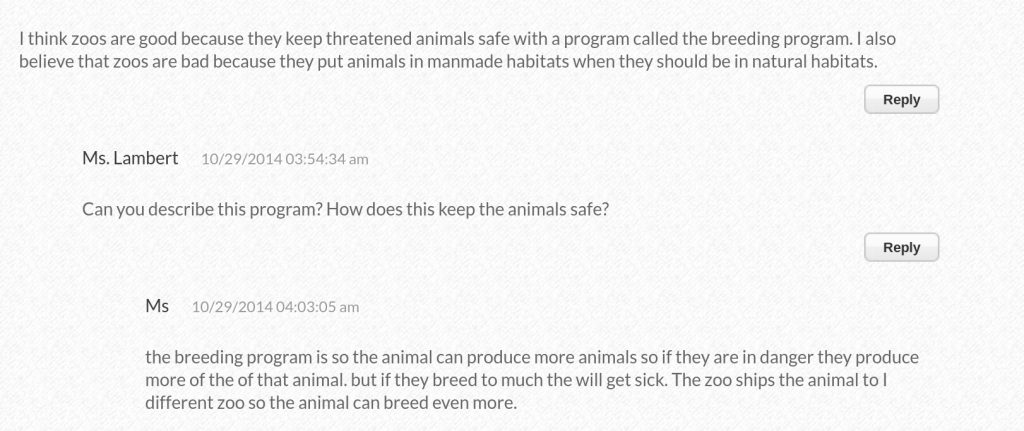It takes a crisis to elevate worker rights issues. The Covid-19 pandemic is no exception.
No Paid Sick Days Put Workers at Risk
Paid sick days are a critical part of the workers’ employment agreement. Paid sick days are as important as a salary or hourly wage as they impact how much employees get paid. Without paid sick days, workers go without earnings. For workers who are paid minimum wage, taking a sick day means they go without pay and thus may have to decide between paying their rent or buying groceries.
“Essential” Government Sponsored Paid Sick Days (CRSB)
During the Covid-19 pandemic, the federal government provided the Canada recovery sickness benefit (CRSB) program to support workers who missed work due to the consequences from the Covid viral spread. This meant workers were paid to stay home if they were sick and/or in quarantine. From a public health perspective, regardless of a pandemic, workers should stay home if they are ill as they are likely to spread infections to others.
No Paid Sick Days Results in the Spread of Illness to Communities and Workplaces
Even before the Covid-19 pandemic, workers regularly went to work sick as they had no options to stay home and lose pay. Workers who go to work sick spread their illness to others, thus creating more illness in the workplace. This results in more workers having to make the decision to either go to work sick or stay home with no pay. Spreading illnesses in workplaces increases sick leave and decreases productivity with more workers staying home. Further, sick employees can pass on their illnesses to clients and customers.
No Paid Sick Days Impacts Parents and Guardians
Parents are significantly impacted by a lack of sick days due to the regular occurrence of childhood illnesses. As a parent of two young children, I had to stay home many times due to my children’s illnesses. At the time, my former spouse refused to stay home with his children so I could go to work. He cited that it would be a CLM (i.e., Career Limiting Move) as “men did not take time off to take care of children”.
As I was only allocated five sick days a year, I ended up using my vacation days. I had many meetings with my supervisor about the multiple days I was taking off as he stated “it didn’t look good.” I was the only woman in my department that had young children. I ended up going several years without any vacation days, using them all to take care of my children and/or attend gynecological appointments. A manager noted that maybe I should consider taking an early maternity leave (which was only 5 months at that time.) The bias came across loud and clear, “pregnant and parenting women should not be working here”.
No Paid Sick Days Means Women Face Labour Inequity
Women, especially single parents, are disproportionally impacted by having to take time off to care for children. Further, women are usually tasked with caring for elderly relatives. The lack of paid sick days disproportionally impacts women creating significant inequities in their labour rights.
Paid Sick Days are Essential for All Workers
In highlighting the need to provide paid sick days, the CRSB program highlights that workers do not have adequate coverage when they become sick. Public health professionals and policy experts state that an adequate number of paid sick days would give the low-wage and essential workers income protection and job security they need to stay home to care for themselves and their families.
Paid Sick Days With Conditions
Even when workplace sick days are available for circumstances dealing with Covid-19, conditions may apply. A close relative of mine, who works for a large Canadian telecommunications company, was put in a precarious situation.
Over the Winter holidays, his roommate travelled to Portugal. Upon returning, this roommate did not quarantine separately in another location. Instead, the person returned to the house he shared with others. My close relative was put in a predicament as he could no longer pass Covid screening protocols due to the presence of his roommate. He was left with four options:
Receiving daily pay:
- Collect pay by lying to his employer that his roommate had Covid symptoms and quarantine for 14 days
- Collect pay by working and staying in a hotel room using his own money
- Collect pay by working, disregarding Covid screening protocols and taking risks of passing on Covid to customers
Losing daily pay:
- Inform his employer that he did not pass Covid screening protocols due to his roommates international travel and quarantine for 14 days with no pay
For a young person, who must deal with the high costs of rent, it is a hard decision to make. Readers can make their own judgements on which decision the young man made. Readers can also reflect on how they would handle this precarious predicament.
Labour Advocacy for Paid Sick Days
President of the Ontario Federation of Labour, Patty Coates, said that provincially mandated paid sick leave is necessary to support workers in their lives. She noted that having to apply for CRSB is arduous as workers need to know how to apply for it and then must wait for funds to arrive. Further, people who apply for these benefits must also know how to negotiate and have access to computer systems in a language that they can read and understand.
Advocacy For Paid Sick Days
Labour unions advocate for fair and equitable labour practices for all. As union members, we have friends and family who face unfair and inequitable labour practices. We must push forward to support all workers.
The @ETFOPeel Twitter campaign posted:
“Now, more than ever, we “must” protect essential workers and our communities with:
- Increased pandemic pay
- Paid sick leave
- Enhanced Health and Safety at work
- Better access to COVID testing”
The Peel Elementary Teachers’ Local highlights:
“Join @ETFOPeel members in taking action” For more information click here
“Join Peel’s public elementary teachers in helping to give voice to these critical demands now by visiting the ‘Take Action’ page of the Warehouse Workers Centre of Peel Region, and the ‘Take Action’ page of the Decent Work & Health Network.
You can also send your own email to your federal MP and provincial MPP.”
I’ve included more media on labour’s push for paid sick days.
Rest and be well,
Collaboratively Yours,
Deborah Weston, PhD
- Singh repeats call for provincial and federal governments to institute paid sick days
- Explainer: Implementing Paid Sick Days and Paid Sick Leave
- Keep pushing for paid sick days – it’s working!
- Push for paid sick leave ramps up in Ontario: MPP introduces bill calling for 7 paid days per year, 14 for infectious disease emergency
- The paid sick days conundrum: Pandemic revives debate over who should foot the bill







